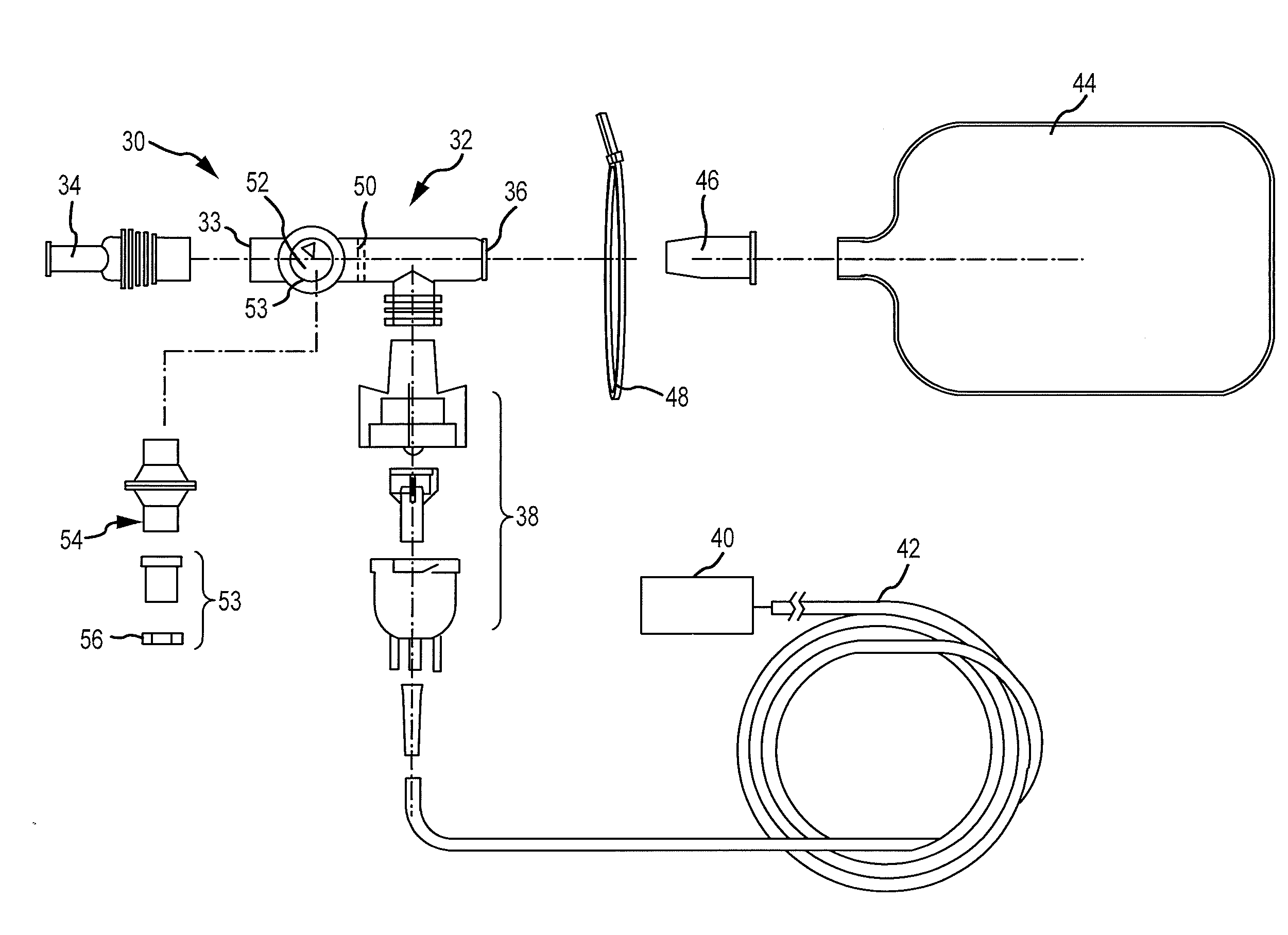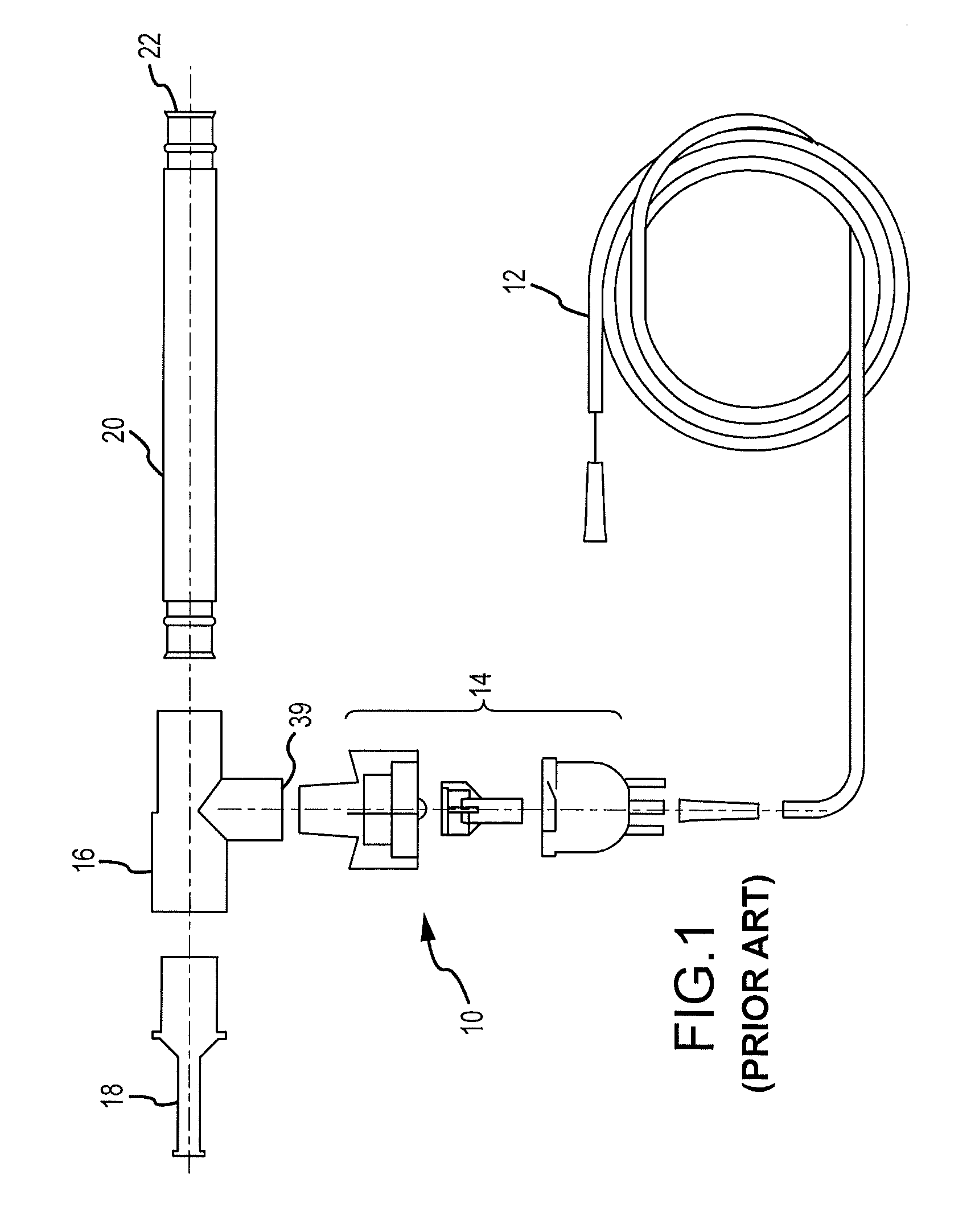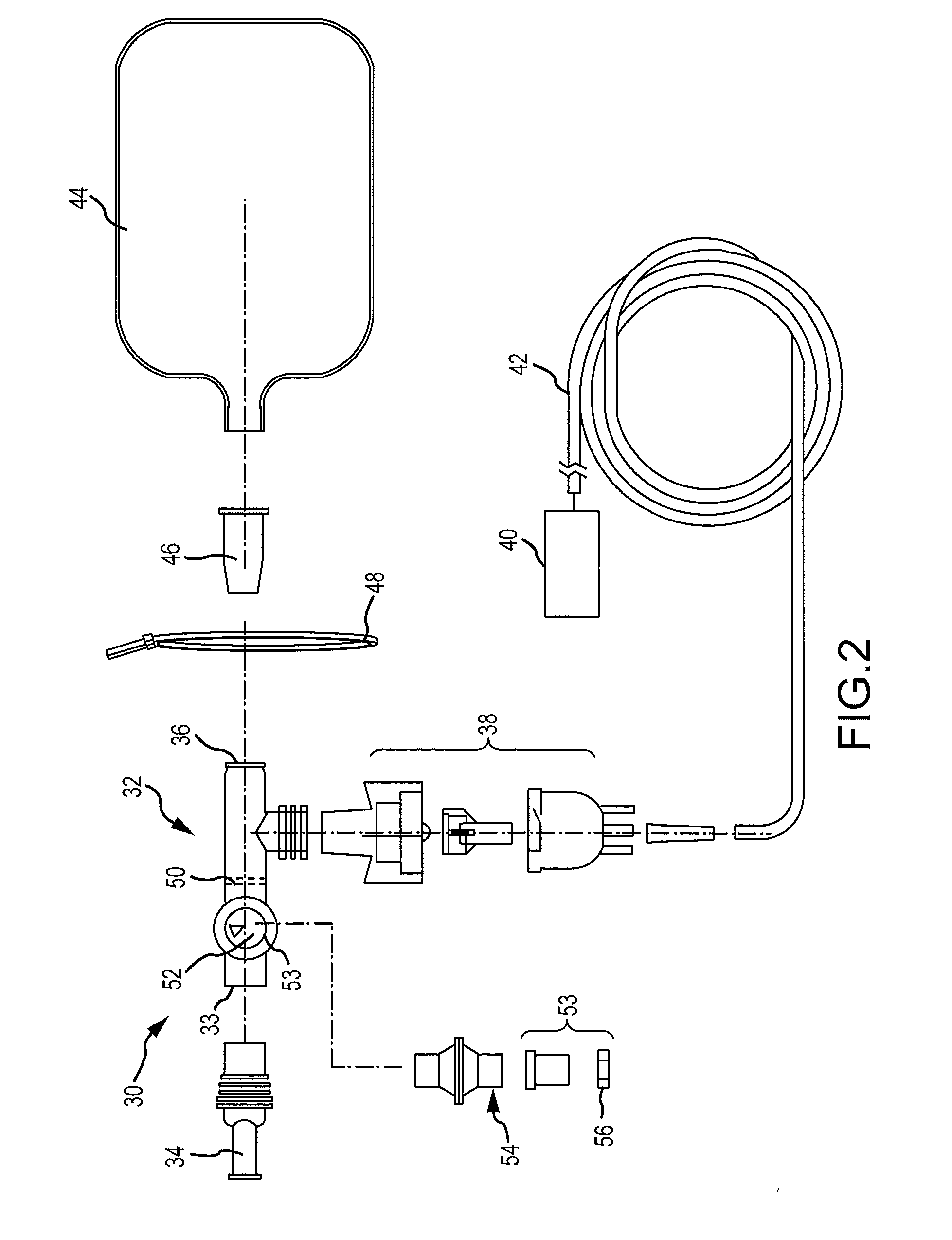[0011]It is another aspect of some embodiments of the present invention to provide self-inflating reservoir. More specifically, reservoirs made of a resilient material, such as a shape-memory
polymer, are employed that return to their original shape after compression caused by
inhalation. The material used by one embodiment is flexible
polyvinyl chloride (PVC) or other similar elastomeric materials, such as
silicon or styrenic block
copolymer (SBC) manufactured by Kraton Performance Polymers Inc. Further, as previously noted, the wall thickness of the contemplated reservoir may be directly proportional to the pressure required to inflate the reservoir. Effective wall thickness is a function of the material selected and may range from about 0.100 mm near the opening of the reservoir to about 0.030 mm in some areas of the primary gas-holding portion. In one embodiment, the wall thickness is consistent from the opening to about the midway point of a spherical reservoir (a first hemi-spherical portion) wherein the remainder of the spherical reservoir from the midway point to the end of the reservoir (the opposed hemispherical portion) is made of a thinner or different material. By defining the reservoir material of manufacture and / or wall thickness, the amount of negative pressure created by the reservoir as it rebounds can be predetermined. Furthermore, the negative pressure assists in filling the reservoir and assists in keeping the inlet
check valve closed during patient
exhalation and dwell time.
[0012]It is also noted that patients frequently do not breathe as deeply as they should following many medical procedures. To resolve this, doctors will prescribe the use of incentive
spirometer which gives the patient and doctor a visual indication that they are
breathing deeply. The shape-memory reservoir of some embodiments of the invention will also provide such
visual feedback to the patient and the patient's doctor or attendant. More specifically, it is yet another aspect of the present invention to provide a somewhat stiff but resilient reservoir that will
resist inhalation, which is a helpful therapy tool. More specifically,
inhalation of gas from a reservoir of a contemplated embodiment of the present invention will take more patient effort. Increased effort translates into a deeper breath that will force medication deeper into the patient's lungs. Forcing the patient to breathe deeper has the added benefit of preventing pneumonia as deep breaths necessarily help prevent fluid build-up in the patient's lungs. Further, by monitoring the degree of inhalation by the patient through observation of the shape of the reservoir during patient inhalation and
exhalation (e.g., the reservoir expanding on
exhalation and collapsing or contracting to a degree during inhalation), the
drug administration process may be similarly monitored, and as such the reservoir provides
biofeedback to the patient and / or the patient's attendant regarding the patient's
breathing pattern.
[0013]It is another aspect of the present invention to provide a reservoir that collapses in a controlled fashion to ensure that the gas contained in the reservoir is completely expelled. Bag reservoirs of the prior art can collapse in such a way to block the reservoir opening and thereby trap some gas inside the reservoir. Thus, reservoirs of some embodiments of the present invention employ thicker and stiffer walls adjacent to the open end than the gas-holding portion of the reservoir to prevent the collapsing reservoir from blocking the open end and
trapping gas. Other reservoirs employ stiffening ribs or seams that help control reservoir collapse to prevent blocking the opening. Still other reservoirs of the contemplated invention are made of a combination of materials that collapse in a predetermined manner. For example, in one embodiment the reservoir is made of two distinct materials, one stiff and less apt to collapse than the other. In operation, the more flexible material, which is located away from the reservoir opening, will collapse first. Any of these reservoir configurations and those similar thereto has the
advantage of maintaining the opening while having the primary gas-holding portion fully collapse upon inhalation, which allows substantially all of the stored gas to be inhaled. Alternatively, the reservoir opening may be held open with an adapter that is inserted into the opening.
[0014]It is a related aspect of the present invention that condensation, which contains medicine, in the reservoir is reduced. More specifically, collapsed walls of prior art reservoir bags may stick together and trap gas within folds, creases, or pockets which leaves medication adhered to the inside surface of the bag. A test of one embodiment of the present invention reduced the amount of condensation in the reservoir by 90%.
[0015]It is yet another aspect of the present invention to provide a
breathing system, comprising: a gas source; a housing having: a first inlet in fluid communication with said gas source, a first port in fluid communication with a patient interface, and a second port in fluid communication with a reservoir; an outlet, wherein said housing includes a first
check valve positioned between said first inlet and said outlet; and wherein output from said gas source flows to said first inlet and to said reservoir, the output inflating said reservoir until said first
check valve is opened, which allows the output to be directed from said reservoir and said gas source to said patient interface.
[0016]It is another aspect of the present invention to provide a method of reducing waste in the delivery of aerosolized medicine or gas to a patient comprising: providing a gas source; providing a housing having: a first port associated with said gas source, a second port associated with a reservoir, a third port associated with a patient interface, and a fourth port, and a check valve positioned between said first port and said fourth port; delivering a gas from said gas source to said first port of said housing; directing said gas to said reservoir via said second port; opening said check valve upon patient inhalation; directing said gas from said reservoir to said patient interface; closing said check valve when the patient is not inhaling; and directing
exhaled air out of said housing through said fourth port.
 Login to View More
Login to View More  Login to View More
Login to View More 


